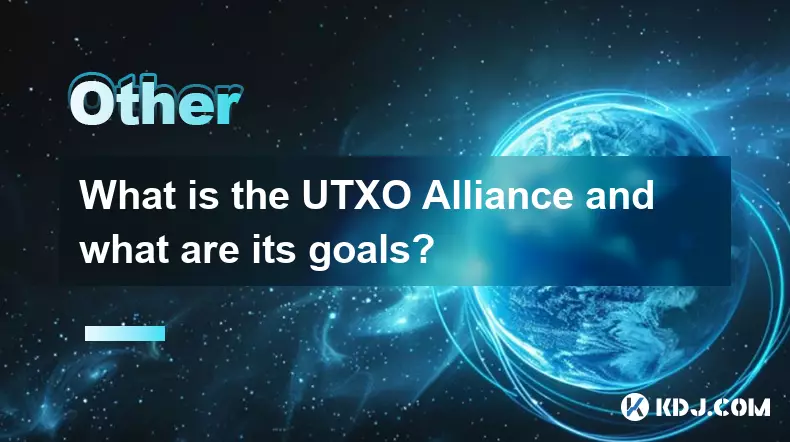-
 bitcoin
bitcoin $101752.865364 USD
-1.09% -
 ethereum
ethereum $3382.985899 USD
-1.38% -
 tether
tether $0.999658 USD
0.04% -
 xrp
xrp $2.272505 USD
-1.51% -
 bnb
bnb $989.089004 USD
0.14% -
 solana
solana $156.962612 USD
-3.08% -
 usd-coin
usd-coin $0.999776 USD
0.01% -
 tron
tron $0.290786 USD
-0.69% -
 dogecoin
dogecoin $0.174594 USD
-2.86% -
 cardano
cardano $0.560085 USD
-3.55% -
 hyperliquid
hyperliquid $40.023704 USD
-5.75% -
 chainlink
chainlink $15.324649 USD
-2.78% -
 bitcoin-cash
bitcoin-cash $493.576540 USD
-3.52% -
 zcash
zcash $571.320038 USD
-12.05% -
 stellar
stellar $0.280066 USD
-4.26%
What is a nonce in a blockchain transaction and what is its purpose?
In blockchain, a nonce ensures transaction order and network security by preventing double spending and enabling proof-of-work validation.
Nov 09, 2025 at 09:39 pm

Understanding the Role of Nonce in Blockchain Transactions
1. A nonce is a number used once in the context of blockchain, particularly during the mining process or when signing transactions. It is an arbitrary value that miners adjust to generate a hash that meets specific criteria defined by the network’s difficulty level. In proof-of-work systems like Bitcoin, the nonce plays a critical role in securing the blockchain.
2. When a miner attempts to add a new block to the blockchain, they must find a hash for the block header that is below a target threshold. This requires repeatedly hashing the block data with different nonce values until a valid hash is produced. The computational effort involved deters malicious actors and ensures network security.
3. The term 'nonce' stands for 'number used once,' emphasizing its one-time use nature. Once a valid nonce is found and the block is added to the chain, that particular nonce becomes part of the block's permanent record. Any attempt to alter the block would require finding a new valid nonce, which is computationally impractical.
4. In Ethereum and other account-based blockchain systems, the transaction nonce serves a different but equally vital function. It is a sequential counter associated with each externally owned account, representing the number of transactions sent from that address.
5. This transaction nonce prevents replay attacks and ensures transaction order. If two transactions from the same sender have the same nonce, only the first one processed will be accepted. Nodes reject any transaction with a nonce lower than the expected value, maintaining consistency across the network.
How Transaction Nonces Prevent Double Spending
1. In decentralized networks where there is no central authority to validate transactions, mechanisms must exist to prevent users from spending the same funds more than once. The transaction nonce acts as a safeguard against this by enforcing a strict sequence for outgoing transactions.
2. Each time a user sends a transaction, the nonce increases by one. For example, the first transaction from an address has a nonce of 0, the second has a nonce of 1, and so on. Nodes validate incoming transactions by checking whether the nonce matches the expected next number.
3. If a node receives a transaction with a nonce that is too high, it holds the transaction in a mempool until earlier transactions are confirmed. This allows wallets to pre-sign multiple transactions with increasing nonces, knowing they will be processed in order even if broadcast out of sequence.
4. Attempting to reuse a nonce results in immediate rejection. Even if a transaction fails or runs out of gas, its nonce is still consumed. To resend such a transaction, the user must create a new one with the same nonce and appropriate adjustments, effectively replacing the original.
5. This system ensures that no two valid transactions from the same sender can occupy the same position in the transaction queue. As a result, double spending is thwarted at the protocol level without requiring trust in intermediaries.
The Impact of Incorrect Nonce Usage
1. Mismanaging nonces can lead to stalled transactions or unnecessary fees. If a user broadcasts a transaction with a nonce that is too low—already used—the network ignores it. If the nonce is too high, the transaction remains pending indefinitely unless prior transactions are submitted.
2. Wallet software typically manages nonces automatically, retrieving the current count from the blockchain. However, manual intervention—such as using raw transaction tools or switching between wallets—can disrupt this flow and cause errors.
3. A common issue arises when users attempt to speed up a slow transaction by increasing the gas price but forget to reuse the same nonce, leading to duplicate nonces and failed submissions. Correctly replacing a pending transaction requires resubmitting it with the same nonce and higher gas fee.
4. Some advanced strategies involve sending a zero-value transaction with the same nonce to the sender’s own address, effectively canceling the original. This consumes the nonce and frees up the transaction queue, allowing subsequent ones to proceed.
5. Exchanges and smart contracts also rely on accurate nonce tracking. Automated systems may fail or behave unpredictably if nonce synchronization is lost, potentially resulting in financial loss or operational downtime.
Frequently Asked Questions
What happens if I lose track of my transaction nonce?You can retrieve the correct nonce by querying the blockchain for the number of transactions sent from your address. Most block explorers and node APIs provide this information. Once known, you can resume submitting transactions with the proper sequence.
Can two different transactions have the same nonce from the same address?No. The network will only accept one transaction per nonce per sender. The first valid transaction with a given nonce to be included in a block finalizes that nonce. Any duplicate is rejected outright.
Is the nonce encrypted or private?The nonce is not encrypted; it is part of the transaction data visible on the blockchain. However, it does not expose sensitive information. Its purpose is functional rather than confidential.
Do all blockchain networks use nonces in the same way?No. Proof-of-work chains like Bitcoin use nonces primarily in mining, while account-based systems like Ethereum use them in transaction ordering. Some newer consensus mechanisms may minimize or eliminate the mining nonce altogether.
Disclaimer:info@kdj.com
The information provided is not trading advice. kdj.com does not assume any responsibility for any investments made based on the information provided in this article. Cryptocurrencies are highly volatile and it is highly recommended that you invest with caution after thorough research!
If you believe that the content used on this website infringes your copyright, please contact us immediately (info@kdj.com) and we will delete it promptly.
- Ripple (XRP) in 2026: Hold or Fold? A Look at XRP's Future and Emerging DeFi Alternatives
- 2025-11-08 18:35:01
- Zcash ZEC Coin Price Explosion: From Privacy Niche to Center Stage
- 2025-11-08 18:55:01
- Berachain Price Prediction: Navigating the Honeycomb Hype in Crypto
- 2025-11-08 18:55:01
- Arthur Hayes, Gold, and Bitcoin: A Modern Monetary Trinity?
- 2025-11-08 19:15:01
- Shiba Inu's Next Move: Navigating a Shifting Market
- 2025-11-08 19:20:01
- Pakistan's Crypto Crossroads: Balancing Opportunity with Asset-Backed Realities
- 2025-11-08 19:20:01
Related knowledge

What are intents in crypto and how do they change user interaction?
Nov 09,2025 at 09:00am
Understanding the Role of Decentralized Exchanges in Modern Crypto Trading1. Decentralized exchanges, commonly known as DEXs, have reshaped how trader...

What is restaking and how does it enhance economic security?
Nov 09,2025 at 11:40pm
Understanding Restaking in the Blockchain Ecosystem1. Restaking refers to the process where users who have already staked their tokens in a proof-of-s...

What is a cryptographic nonce and how is it used to prevent replay attacks?
Nov 08,2025 at 05:00pm
Understanding Cryptographic Nonces in Blockchain Systems1. A cryptographic nonce is a number used only once within a specific cryptographic communicat...

What are the trade-offs between liveness and safety in a consensus protocol?
Nov 09,2025 at 12:20pm
Understanding the Role of Liquidity Pools in Decentralized Finance1. Liquidity pools are foundational components within decentralized exchanges (DEXs)...

What is a call data in an Ethereum transaction and how is it used?
Nov 09,2025 at 01:59am
Understanding Call Data in Ethereum Transactions1. Call data refers to the information sent along with a transaction on the Ethereum network that spec...

What is the UTXO Alliance and what are its goals?
Nov 09,2025 at 01:39pm
Understanding the UTXO Alliance1. The UTXO Alliance is a collaborative initiative formed by prominent blockchain projects and developers who support t...

What are intents in crypto and how do they change user interaction?
Nov 09,2025 at 09:00am
Understanding the Role of Decentralized Exchanges in Modern Crypto Trading1. Decentralized exchanges, commonly known as DEXs, have reshaped how trader...

What is restaking and how does it enhance economic security?
Nov 09,2025 at 11:40pm
Understanding Restaking in the Blockchain Ecosystem1. Restaking refers to the process where users who have already staked their tokens in a proof-of-s...

What is a cryptographic nonce and how is it used to prevent replay attacks?
Nov 08,2025 at 05:00pm
Understanding Cryptographic Nonces in Blockchain Systems1. A cryptographic nonce is a number used only once within a specific cryptographic communicat...

What are the trade-offs between liveness and safety in a consensus protocol?
Nov 09,2025 at 12:20pm
Understanding the Role of Liquidity Pools in Decentralized Finance1. Liquidity pools are foundational components within decentralized exchanges (DEXs)...

What is a call data in an Ethereum transaction and how is it used?
Nov 09,2025 at 01:59am
Understanding Call Data in Ethereum Transactions1. Call data refers to the information sent along with a transaction on the Ethereum network that spec...

What is the UTXO Alliance and what are its goals?
Nov 09,2025 at 01:39pm
Understanding the UTXO Alliance1. The UTXO Alliance is a collaborative initiative formed by prominent blockchain projects and developers who support t...
See all articles





















![The Graph Price Prediction [GRT Crypto Price News Today] The Graph Price Prediction [GRT Crypto Price News Today]](/uploads/2025/11/07/cryptocurrencies-news/videos/690d4df44fe69_image_500_375.webp)




















































